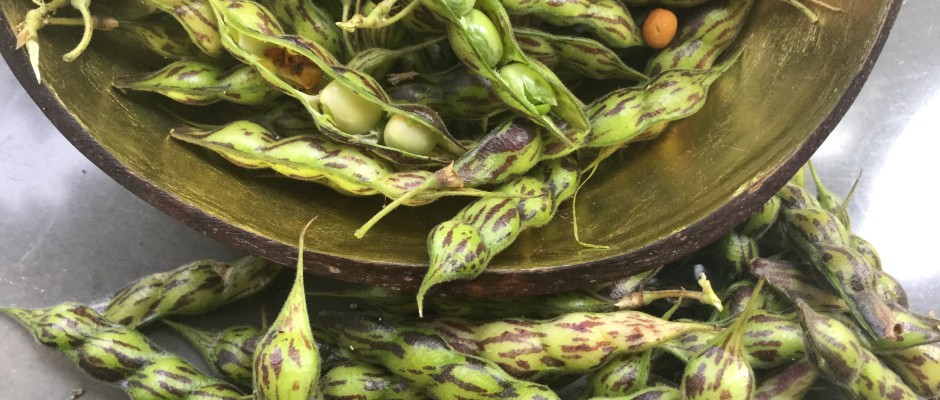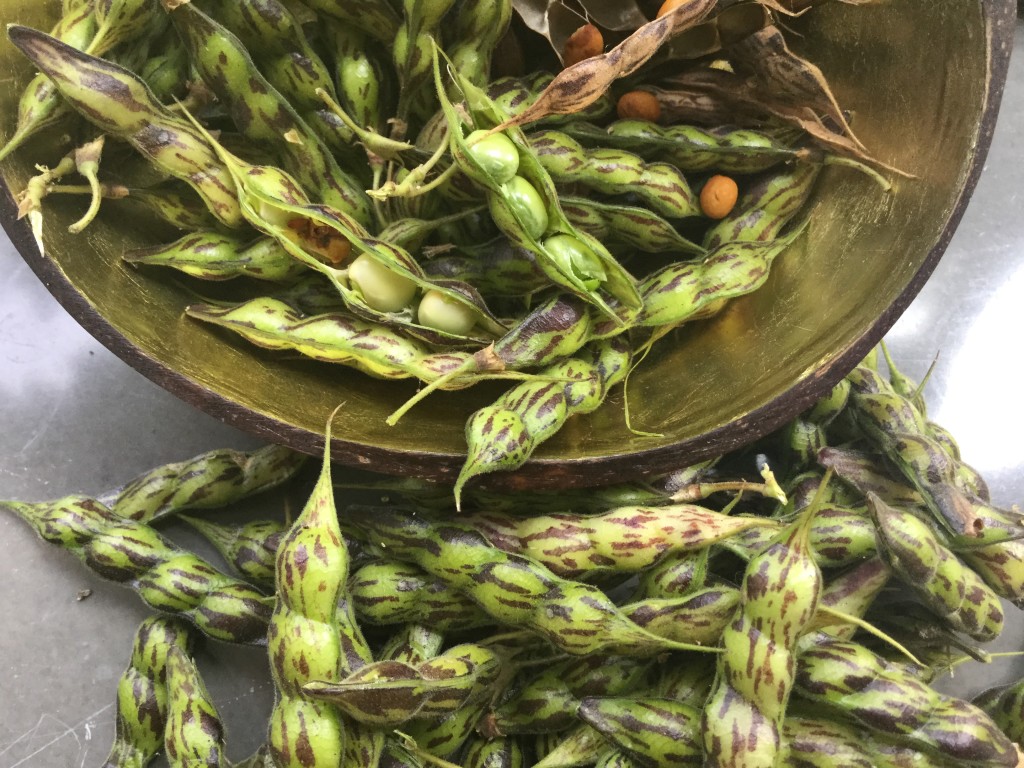Hindu metro plus , The Thuvarai plant
We are all familiar with the pigeon pea lentils or thuvar dhal as it is commonly known here. But,how many of us actually give a thought to the pigeon pea plant? I know I haven’t ! I just buy my regular supply of dhal from the stores for making my sambhar and that’s about it. A few days ago ,all that changed. My sister-in-law ,Ramya and I share a passion for traditional South Indian cooking. Like me ,she too enjoys pottering about her kitchen garden . It was during an evening stroll in her backyard that she pointed out a tall shrub that looked familiar yet unusual.The pods resembled the familiar country beans but the size and varigated stripes did not. There began my introduction to the Thuvarai .
As we stood looking at the wiry plant she carefully chose one deep green pod . Having plucked it ,she deftly popped it open to reveal round pale green pea like kernels. “Of course , you can eat it akka !” , she said when I looked at her with an unsure expression. One taste and I knew straight away that this was going to soon find it’s way to my table. My everyday dry lentil just got elevated to a fresh produce status !
In it’s tender state , I was surprised to find that the thuvarai was not just sweet and juicy but that the crunch did not have any hint of astringency. That sort of hit is sometimes prevalent in peas. But the raw thuvarai wasn’t unpleasant in any way.
I must mention at this point that I’m a big fan of all beans and legumes. My store room shelves are filled with large glass bottles of all kinds of payiru , my freezer at any given point of time has boxes of sprouted beans and my lunch menu will feature one of these on a daily basis. So , you can only imagine how thrilled I was at adding one more pea/ bean dish to my list. Not only are these high in protein but adapt themselves beautifully into a variety of cooking styles and recipes. They can be made into a saucy gravy , a semi masala side dish or even fried to be served as a snack.
I was keen to start growing this protein rich bean as soon as possible. As we discussed growth patterns , Ramya mentioned that it took 6 months for the plant to start producing fruit. The plant resembles a dry , sparse ,sort of unruly shrub. The kind that would grow in more arid regions.When I mentioned this to farmers , they went on to educate me further.
The thuvarai plant actually has a big role to play in soil rejuvenation. It is a drought tolerant crop which accounts for it’s wooded bent look. It in fact cannot survive over watering and excessive rainfall. There are a group of bacteria that form a symbiosis with the legumes.They help in the production of nitrogen in the soil. Dry farm lands grow a mix of oil seeds , pulses and legumes because it helps enrich the soil. It is recommended to plant this thuvarai ,when the soil is damp,well before the flowering season ,when it has the time to go through a cycle of growth. The leaves that are shed from the plant make for very good mulch that is conducive to improving the balance in the soil. It is a good idea to use it as a border plant for a vegetable patch.Not only does it condition the soil but acts as a barrier against wind.
The very next day after my bonding with the thuvarai plant , Ramya made me a delicious curry. The texture of the thuvarai seeds, went perfectly with the South Indian flavours of onion , garlic , curry leaf and tomato. We had it for lunch with millets , then for dinner with dosai and again for breakfast with idli. Needless to say,it was a big hit! The last spoonful was downed very reluctantly! The sound of the spoon repeatedly scraping the bottom of the dish was enough to send me thuvarai picking the very next day !
The velvety outer skin of the pod leaves the fingers a bit sticky after plucking. We plucked a generous handful of fresh pods as well as some dried ones. As the dried pods crackle when pressed open, the seeds inside closely resemble the yellow thuvar dhal in colour. My mother cautions me to double-check the particular variety of thuvarai before sowing. Her words somehow don’t seem to be catching up with my thoughts which have already surged far ahead into thuvarai cultivation and harvesting !



No comments yet.